After procrastinating for quite some time, I decided to switch back on the box.
The box is now tightly close with two acrylic panels. It works so good that as soon as you close it, humidity goes to the roof inside, but let's tackle a problem at a time.
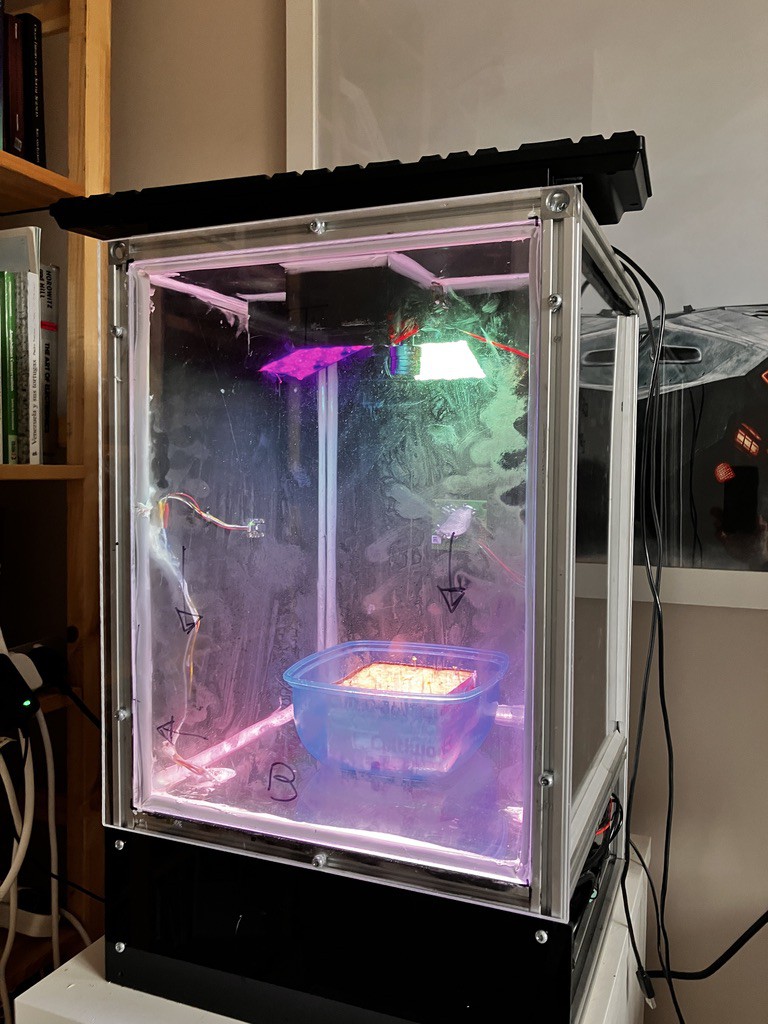
The external acrylic panel has now been painted in black to avoid light coming in, but I left a window to see inside. Not the most aesthetically appealing thing ever invented but it works.

Also added a small flap to keep it completely close.

Put some seedlings inside and after few days, I could start seeing some serious carbon dioxide sinking, and very fast...
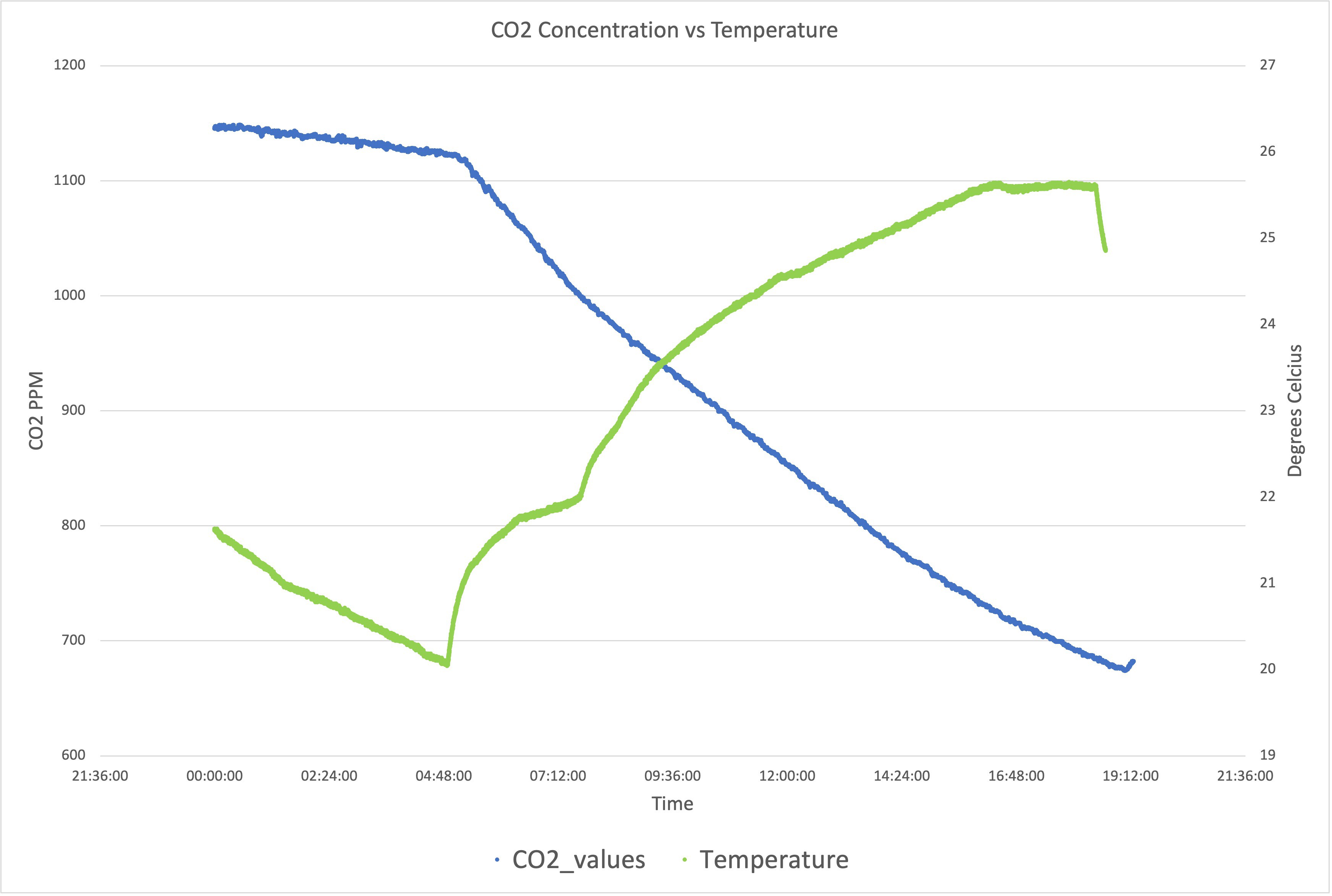
Blue line CO2 values, as soon as the lights go on, CO2 starts to vanish inside the box. There was some leakage that I have since sorted inadvertently as the excess humidity blocked the small fisures that may be around. But humidity was really bad and the humidity sensor not only maxed out, it stop throwing non-sensical numbers. Curiously, temperature readings kept working. See humidity condensing on the panels of the box below.
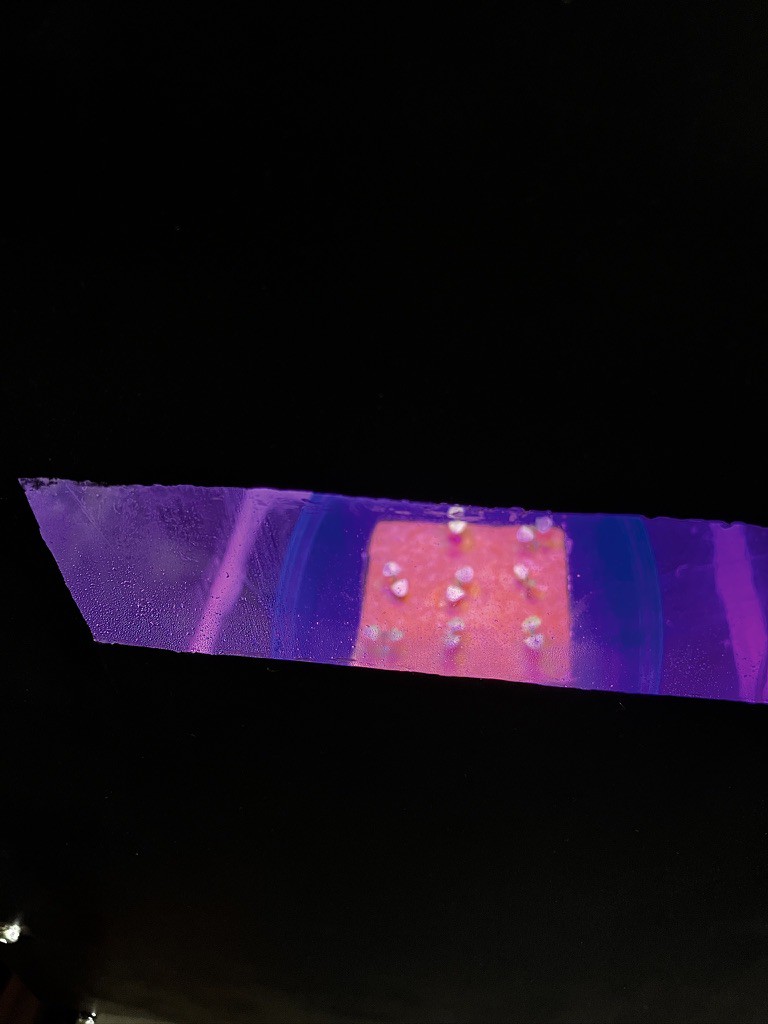
So, the quickest way to sort the humidity issue was to put some home dehumidifiers inside. After putting three, the sensor started working again, while seedlings were small, the dehumidifiers could get humidity just below 100% during the night, but as soon as lights went off and plants started to transpire, humidity got to 100% again. The massive drop is after opening the box to feed the plants. Prior to lights going on the humidity is just below 100%.
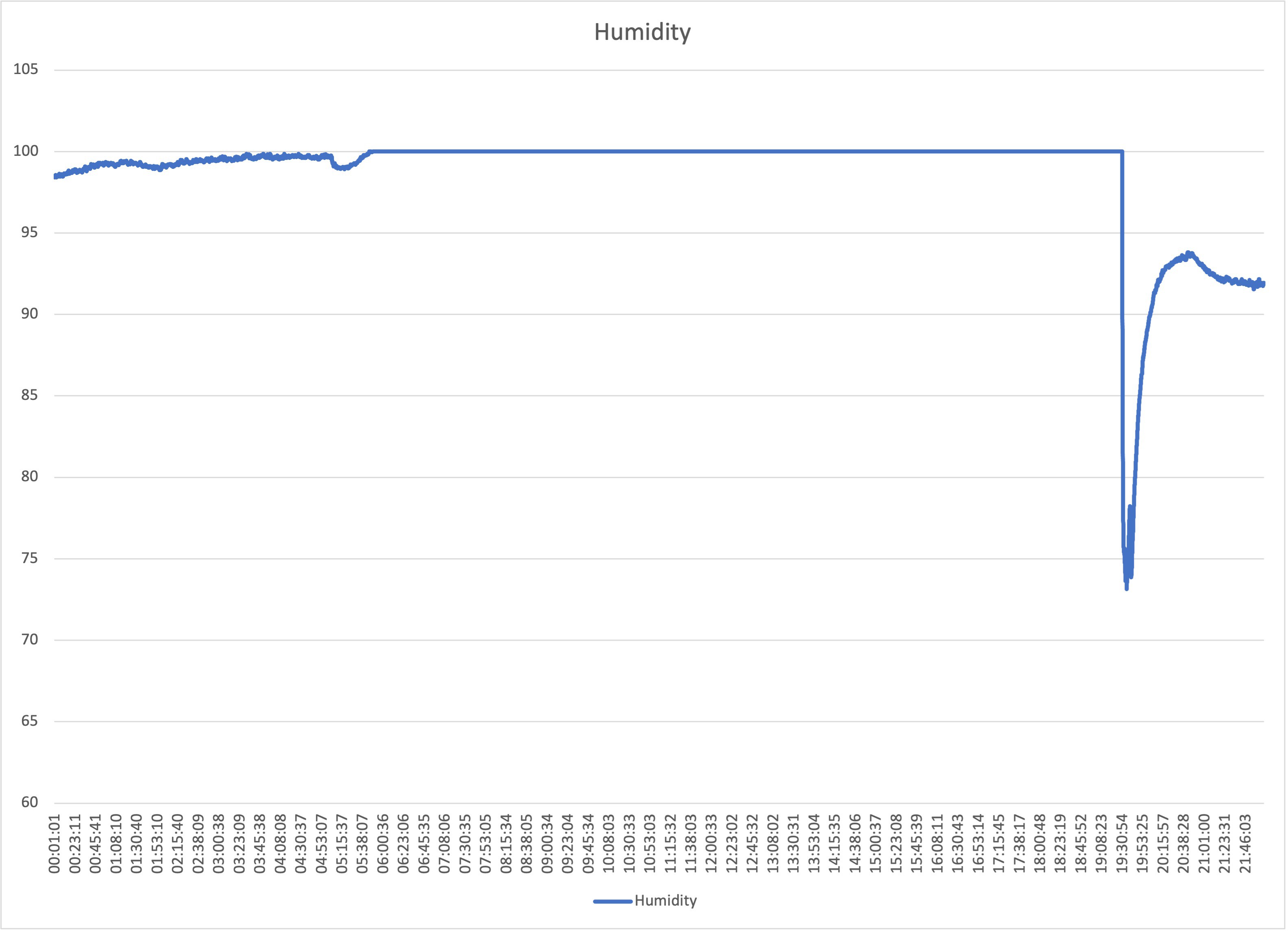
I have noticed that plants were pointing their leaves upwards "praying position" during the night. This is sadly due to extreme humidity. Below the phenomenon can be seen in some of the seedlings. Dehumidifiers are visible too. Light and nutrients are not an issue so far, despite that extreme humidity can also bring some other problems as mould, bacteria, etc. None of that has happened in the enclosure.

As the plants grow, is more difficult to maintain high levels of CO2 inside so, I have decided to buy some cheap CO2 reactor, a lot of silica gel, a solenoid valve, a small axial fan and an enclosure to create a mechanical humidity filter and inject CO2 with a solenoid controlled by an Arduino.
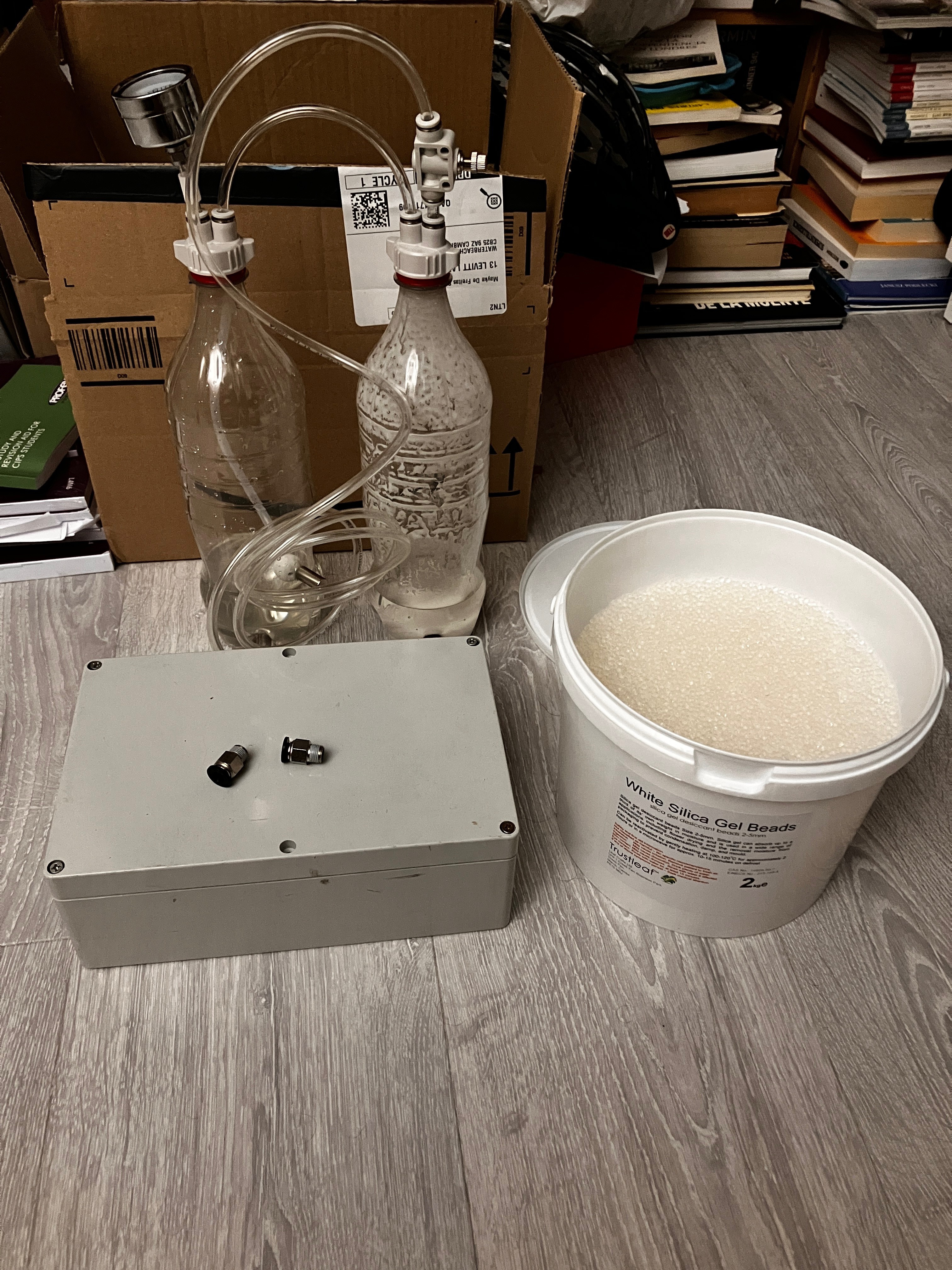
CO2 is being depleted in a matter of 4 hours and even less as plant progress.
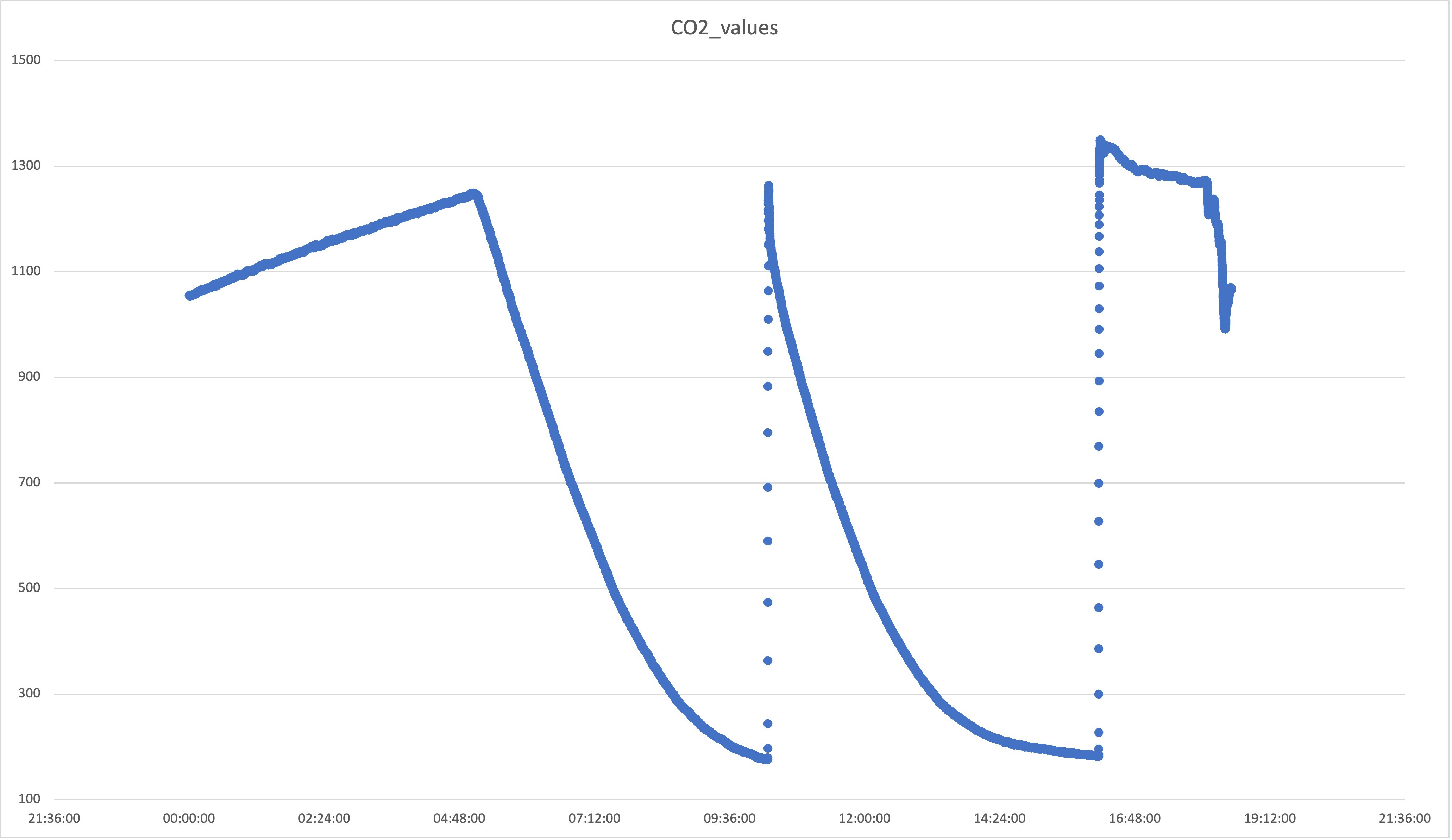
Electron transport rate (rETR) gets affected, although it's too early and the conditions not well controlled as to extrapolate the effects of CO2 levels, humidity, temperature and light levels on it.
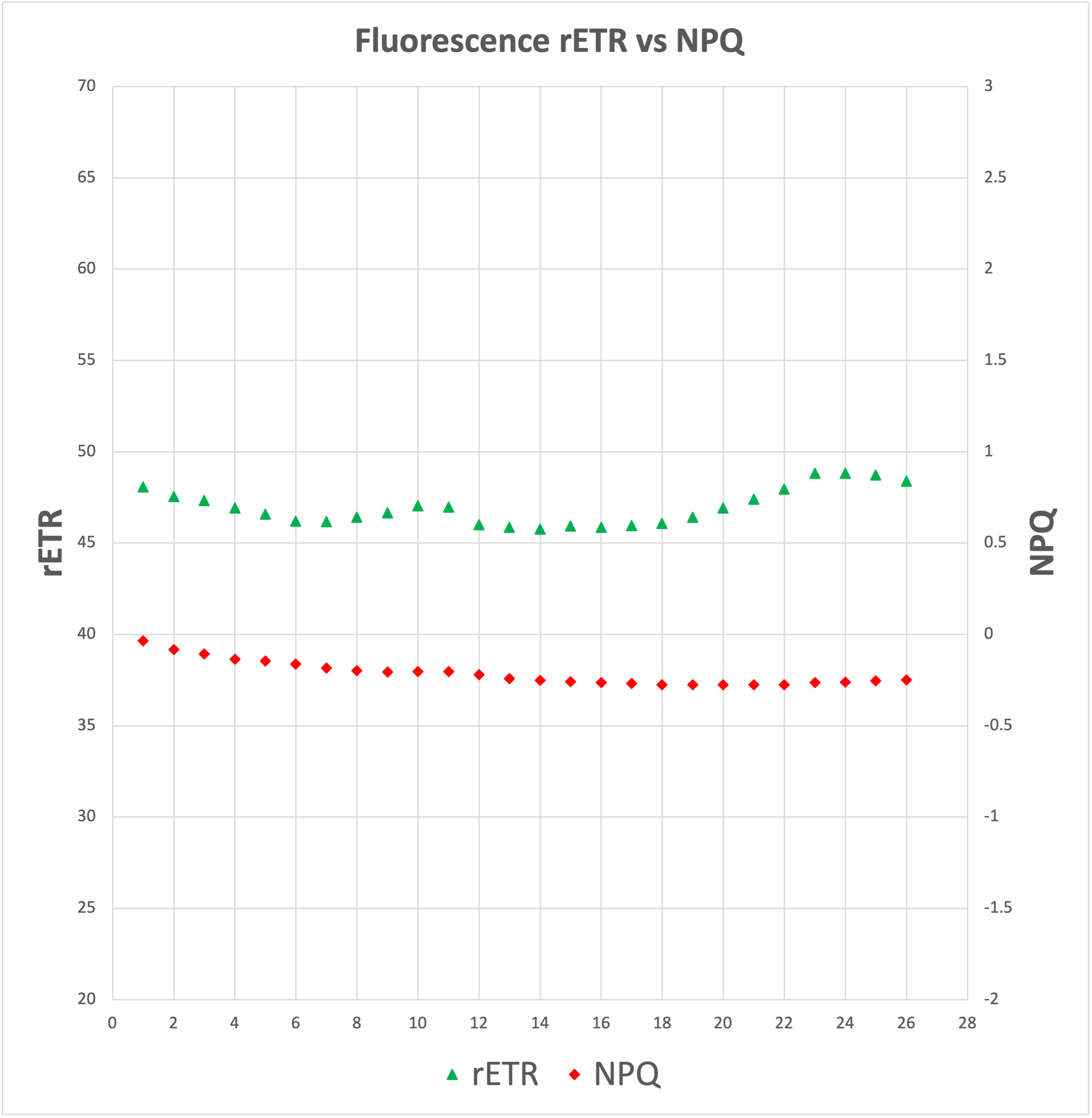
You can see the Fluorescence trace recorded by the fluorometer below (same day as the two previous graphs)
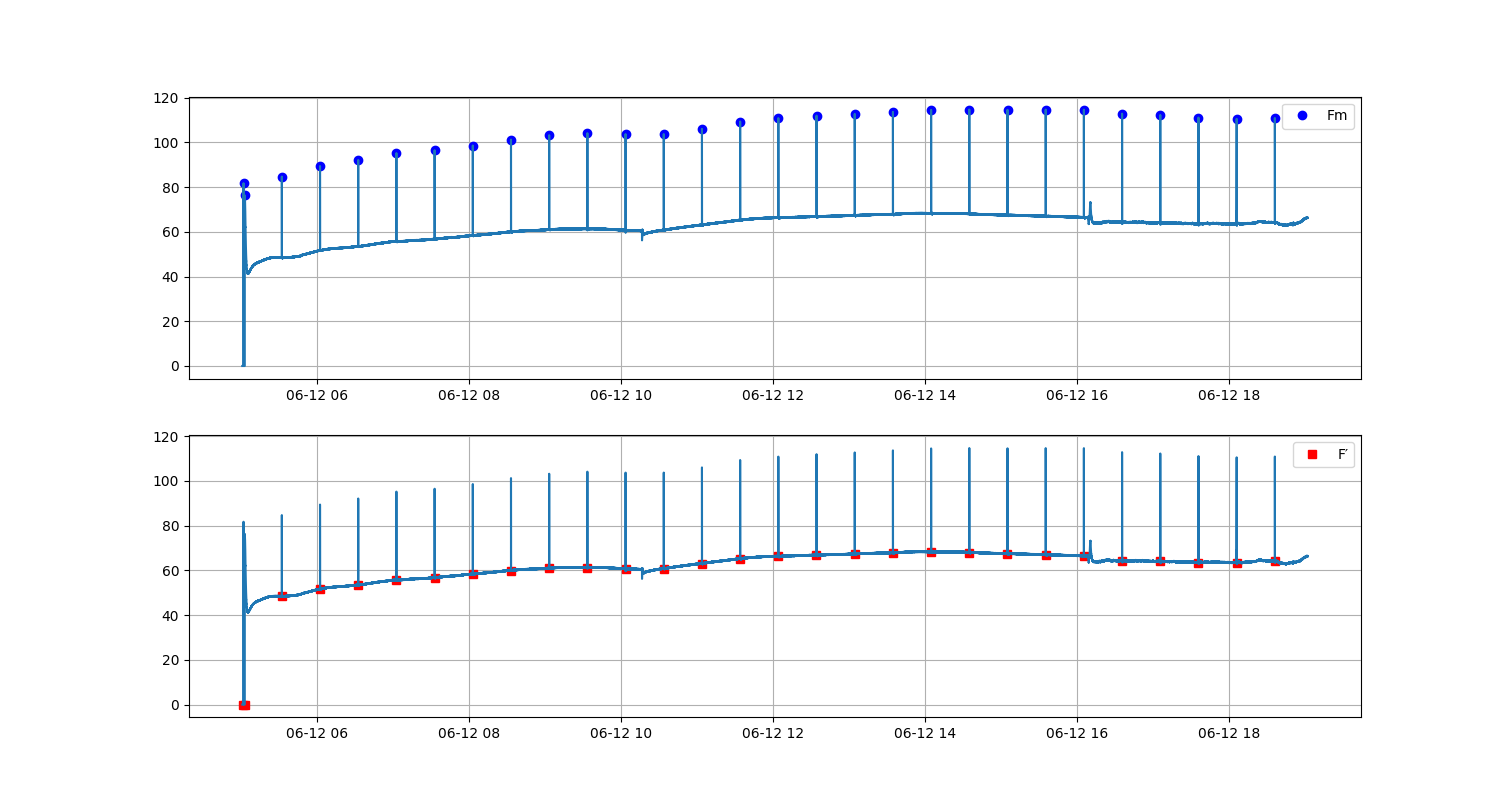
In the meantime, a batch of Thai basil (Ocimum basilicum) has been growing for 15 days in the box and this is how it looks as of publishing this:

It's a bit crowded but leaves look perfect and absolutely healthy so far. They will stay there for another 15 days by which the Tour de France will have started and I will be absolutely absorbed and looking forward to the battle of Alp d'Huez and the Pyrenees. But in between stages, I will measure and weight my little basil plants and report back on number of leaves, size, fresh and dry weight.
That's all for now.
See you in a month time.
 Mayke
Mayke
Discussions
Become a Hackaday.io Member
Create an account to leave a comment. Already have an account? Log In.